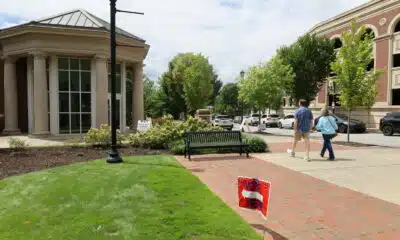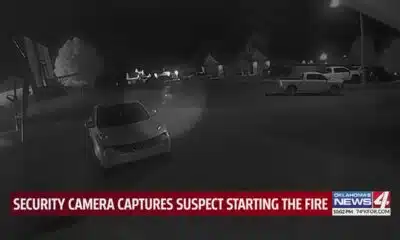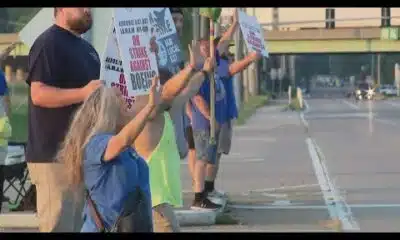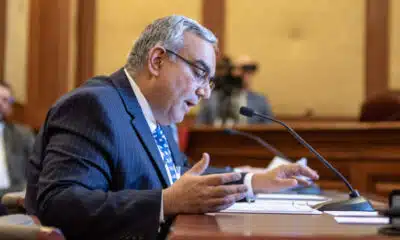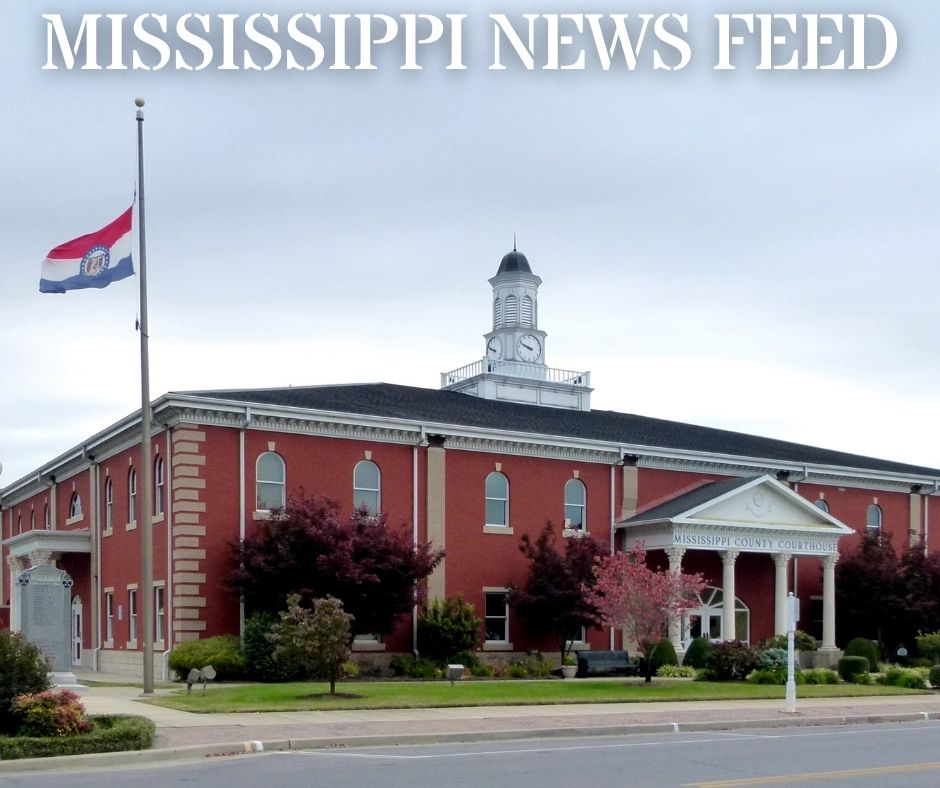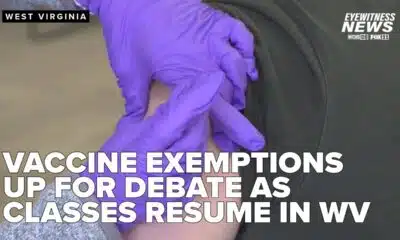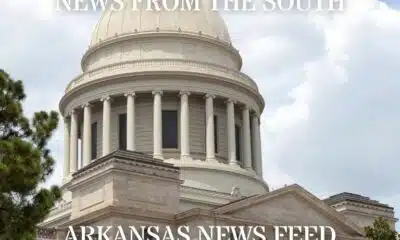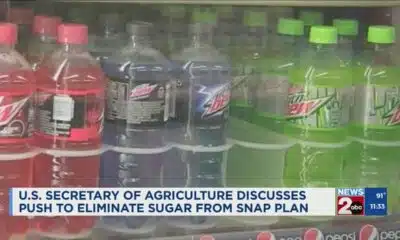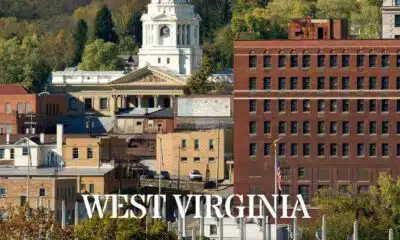News from the South - West Virginia News Feed
McDowell residents feel forgotten, overwhelmed as they face flood recovery with limited help
by Amelia Ferrell Knisely, West Virginia Watch
April 23, 2025
MCDOWELL COUNTY, West Virginia — When the flood water swept through McDowell County, West Virginia, in February, Ashley Rutherford sat in her wheelchair, unable to get out of her home as the water started coming through the doorway. One of her sons put rubber rain boots on her to cover her legs while the water came in.
Nine weeks later, the carpet in the home is still wet. The kitchen’s wooden floor is damp and buckling, and Rutherford’s wheelchair got stuck in a new hole in front of the sink. The downstairs rooms are full of her family’s stuff, crowding the path for her to get around.
“I’m overwhelmed,” said Rutherford, 33, a mother of four. “We’re living out of totes right now. My daughter can’t find the right outfit she wants to wear to school.”
Rutherford lives in Berwind, one of the poor county’s most southern towns. In its hollers, residents — many of whom are elderly — are waiting for help. They need federal aid. A stove. Volunteers to help them clear the thick mud from their basements.
There hasn’t been nearly enough help, and people feel forgotten by disaster relief agencies, nonprofit organizations and state government leaders in Charleston.
Many of McDowell’s residents are unable or unlikely to leave their long-time family homes, resulting in them now sitting in damp structures — some still without heat or running water — while mold starts to set in.
Dale Blevins, 70, stood in her damp basement, where patches of crystalized white mold were forming on the concrete walls. Volunteers cleaned out her basement after the flood; she didn’t know who would come in to remove the mold. Her husband relies on an oxygen tank, and the mold was likely already a danger for his health.
“I hate to ask for help,” she said, adding she hadn’t heard from any local or state officials. “Nobody has ever come here.”
The National Guard, church groups and other volunteers made their way through the county to help out. Those efforts have largely dried up. The local churches, many with elderly congregations, are limited in how they can help. Hundreds of homes still need to be cleared out and cleaned, residents say.
“We need the boots on the ground who are physically able to do the muck outs,” said Michael Brooks, a McDowell County commissioner. “It is hard work, it’s brutal work and very time consuming … I don’t know if some realize how dire the need is.”
Sydnei Tatum, 33, is a local business owner and photographer who took the images for this story. Over the last two months, she has cleaned out basements, handed out grocery gift cards and made lists of residents in need of everything from beds to refrigerators.
“I’m gonna fight for these people, because they have no one else to do it for them,” she said.
Tatum blamed the lack of recovery efforts on state leaders’ failure to prioritize McDowell County. They’d downplayed the crisis, she said.
“Purely because nobody is interested in the poorest areas of the county, and we are in it,” she said.
In February, Gov. Patrick Morrisey said the state “was in a position to act quickly,” while also requesting a federal disaster declaration to unlock resources for affected counties.
“We want to make sure we’re helping these southern counties recover,” Morrisey said at a press conference on Feb. 20 after visiting some parts of McDowell.
His spokesperson didn’t reply to questions for this story about the status of recovery efforts.
The flooding, which killed three people, happened during the legislative session; it wasn’t a major topic among lawmakers.
There isn’t dedicated funding in the recently-approved state budget for McDowell’s flood recovery.
Limited county funds, endless clean-up work
Carol Lester, 73, stood on her porch in Bartley, overlooking her washed out, sandy yard. She’d survived the flood, having to be rescued by two young men as water rushed into her kitchen and living room. She recalled how 911 couldn’t help her, then two men showed up and carried her husband, who is disabled, through the woods for five hours in the cold rain.
“We’ve been through five floods. This was the worst,” said Lester, who has been in her home for 51 years. “It seemed like you could hear the devil and his demons in that water.”
A destroyed sofa set was discarded in front of her house. It needed to be hauled away. She was waiting on a plywood delivery, hopeful that her family members could rip up her water-logged flooring.
No one other than Tatum had been by her house since the flood, Lester said.
Nobody cares, I’m telling you, this day and time.
– Carol Lester
Before the flood, McDowell was already facing hardships. It’s one of the poorest counties in the country, and some residents haven’t had clean drinking water for decades. Much of the county is located on a flood plain, and floods have swept through before. Fewer than 18,000 people now live in the county now that mining jobs have dried up.
The drop in population has impacted county finances reliant on local taxpayers, and Brooks explained that the bulk of money collected through personal property taxes goes to the board of education.
There isn’t enough left over, he said.
Thirty-six private bridges were washed out in the flood, some of which can’t be covered by Federal Emergency Management Assistance (FEMA) or county money. Some bridges may never be repaired.
“I wish to God that we had the funding that we could start fixing it. But, it’s not a few thousand dollar fix. It’s a hundreds of thousands dollar issue on some of the bridges,” Brooks said.
Brooks was frustrated over social media comments saying the county or state wasn’t doing enough. Morrisey had been helpful, he said, and required-government processes can be slow.
“I am bombarded, as well as the other commissioners, with more questions than answers at this juncture,” he said. “It’s not that we’re not trying to garner the answers or we’re trying to shrug these things off. But we’re a small county and a lot of times we don’t have resources.”
FEMA, which continues its efforts in the county, and Voluntary Organizations Active in Disaster (VOAD) didn’t return requests for comment for this story. Some residents said they weren’t expecting much help from the federal aid.
Debris-filled water poses a future flood risk
The floors are still damp in Linda Wood’s home in the community of Berwind.
“I’m going to need new flooring, like linoleum,” said Woods, 61. She lost her stove, lawnmower, clothes, shoes and more in the flooding.
“I’m worried about the moisture getting under the mattress and causing mold,” she added.
Rain is forecasted this weekend in McDowell, causing anxiety for Woods. She pointed to a nearby stream, filled with debris leftover from the flood. Without clearing it out, she said, another flood was likely to hit her community at any time.
The area’s stream beds haven’t been dredged or restored since the 1977 flood, WVVA reported. Rep. Shelley Moore Capito, R-W.Va., recently visited McDowell, promising to request money to clean up the streams in hopes of preventing future flooding.
Earlier this year, Morrisey didn’t request funding for the state’s flood mitigation efforts through the State Resiliency Office. The Republican-majority in the House of Delegates rejected a Democratic lawmakers’ proposal to put $50 million in the state budget to protect from future floods.
Politics and state funding aren’t the main topics of conversation among McDowell residents in April. Neighbors are wondering how they’ll clean out their basements and remove the mountains of debris scattered alongside roads. There aren’t large dumpsters in the area, and the county would need to work with the state to create a designated dumping site.
Lester looked at a holly bush in her yard that had survived the flood. Her husband bought it for her years ago.
“God left that holly bush for a reason. It weathered the storm, but it still survived,” she said. “Every morning, when I get up, I look at the little holly bush. I get my strength from that.”
YOU MAKE OUR WORK POSSIBLE.
West Virginia Watch is part of States Newsroom, a nonprofit news network supported by grants and a coalition of donors as a 501c(3) public charity. West Virginia Watch maintains editorial independence. Contact Editor Leann Ray for questions: info@westvirginiawatch.com.
The post McDowell residents feel forgotten, overwhelmed as they face flood recovery with limited help appeared first on westvirginiawatch.com
Note: The following A.I. based commentary is not part of the original article, reproduced above, but is offered in the hopes that it will promote greater media literacy and critical thinking, by making any potential bias more visible to the reader –Staff Editor.
Political Bias: Center-Left
The article primarily focuses on the severe struggles faced by the residents of McDowell County, West Virginia, in the aftermath of flooding, while also criticizing the lack of sufficient governmental response at both the state and federal levels. The piece highlights the failures of disaster relief agencies and the state government, particularly Governor Patrick Morrisey, and emphasizes the plight of the county’s poorest residents. The tone of the article expresses frustration with the political inaction and prioritization of more affluent areas. Additionally, the article touches on the lack of funds in state budgets for recovery efforts and criticizes the decision-making of a Republican-majority legislature, indicating a tendency toward a Center-Left perspective, where advocacy for governmental accountability and support for the marginalized is emphasized.
News from the South - West Virginia News Feed
WEEKEND WEATHER AUG 24TH
SUMMARY: WEEKEND WEATHER AUG 24TH: Today was a pleasant, typical summer day with temperatures reaching 80° in Beckley. A cold front is moving through tonight, bringing increasingly breezy winds and cooler air, dropping temps to the high 50s overnight and into the 40s early next week. Rain chances remain very low, with mainly dry conditions expected tonight and tomorrow. Monday will feature a mix of clouds and sun with highs in the high 60s to low 70s—cooler than normal. Low humidity and comfortable weather will continue through the week, making it a great time to enjoy the outdoors as fall arrives early.
FOLLOW US ON FACEBOOK AND TWITTER:
https://facebook.com/WOAYNewsWatch
https://twitter.com/WOAYNewsWatch
News from the South - West Virginia News Feed
Feds direct states to check immigration status of their Medicaid enrollees
by Anna Claire Vollers, West Virginia Watch
August 22, 2025
This week, the Trump administration’s Centers for Medicare & Medicaid Services (CMS) announced an effort to check the immigration status of people who get their health insurance through Medicaid and the Children’s Health Insurance Program.
Medicaid is the public health insurance program for people with low incomes that’s jointly funded by states and the federal government. For families that earn too much to qualify for Medicaid but not enough to afford private insurance, CHIP is a public program that provides low-cost health coverage for their children.
The feds will begin sending states monthly enrollment reports that identify people with Medicaid or CHIP whose immigration or citizenship status can’t be confirmed through federal databases. States are then responsible for verifying the citizenship or immigration status of individuals in those reports. States are expected to take “appropriate actions when necessary, including adjusting coverage or enforcing non-citizen eligibility rules,” according to a CMS press release.
“We are tightening oversight of enrollment to safeguard taxpayer dollars and guarantee that these vital programs serve only those who are truly eligible under the law,” Robert F. Kennedy Jr., who oversees CMS as secretary of the U.S. Department of Health and Human Services, said in a press release announcing the new program.
As of April, roughly 71 million adults and children nationwide have Medicaid coverage, while another 7 million children have insurance through CHIP. Immigrants under age 65 are less likely to be covered by Medicaid than U.S.-born citizens, according to an analysis from health research organization KFF.
Immigrants who are in the country illegally aren’t eligible for federally funded Medicaid and CHIP. Only citizens and certain lawfully present immigrants — green card holders and refugees, for example — can qualify.
But some states have chosen to expand Medicaid coverage for immigrants with their own funds. Twenty-three states offer pregnancy-related care regardless of citizenship or immigration status, according to KFF. Fourteen states provide coverage for children in low-income families regardless of immigration status, while seven states offer coverage to some adults regardless of status.
The tax and spending package President Donald Trump last month cuts federal spending on Medicaid by more than $1 trillion, leaving states to either make up the difference with their own funds or reduce coverage. But the new law also includes restrictions on coverage for certain immigrants, including stripping eligibility from refugees and asylum-seekers.
Stateline reporter Anna Claire Vollers can be reached at avollers@stateline.org.
West Virginia Watch is part of States Newsroom, a nonprofit news network supported by grants and a coalition of donors as a 501c(3) public charity. West Virginia Watch maintains editorial independence. Contact Editor Leann Ray for questions: info@westvirginiawatch.com.
The post Feds direct states to check immigration status of their Medicaid enrollees appeared first on westvirginiawatch.com
Note: The following A.I. based commentary is not part of the original article, reproduced above, but is offered in the hopes that it will promote greater media literacy and critical thinking, by making any potential bias more visible to the reader –Staff Editor.
Political Bias Rating: Centrist
This article provides a balanced overview of recent policy changes to Medicaid and CHIP enrollment verification tied to immigration status. It presents facts, official statements, and statistics without emotive language or partisan framing. Both the rationale behind the policy, such as safeguarding taxpayer dollars, and the impact on immigrants are covered objectively. The inclusion of context on eligibility rules and varying state approaches reinforces a neutral, informative tone, typical of centrist reporting seeking to inform rather than advocate.
News from the South - West Virginia News Feed
Students go back to school in West Virginia, but same education debates rage
by Andrew Donaldson, West Virginia Watch
August 21, 2025
While students across the Mountain State are going back to school to advance to the next grade, many parents and most of the politicians seemed to be held back in the same spots with the same education arguments of the last few years.
News headlines and social media stories come one at a time on the as-needed basis as events and the business model dictate. But separate news items and viral debates over school choice, school funding, school vaccination requirements, school closings, school performance, and school staffing are variations on one theme: What is education, and who should control it?
That basic “who/what” question of intent and control is not unique to education issues. All political stories when reduced to their essences are stories about power and money. Education has become more and more a political endeavour, because of inherently involved power and money. As such, the rules of discerning politics apply far more than the traditional policy ideas and learning philosophies of what information goes into a student and how to evaluate the information coming out of a student. Add in the culture warring elements fueled by the modern marriage of news media and social media, and you have an environment that is heavy on the vibes and light on vocation.
The COVID-19 crisis is justifiably noted to be an inflection point in the push-pull world of policy and politics in general and education specifically. COVID — or more specifically the reaction by the people involved in running the institutions of American society from schools, to government, to health care, to social order — revealed the pre-existing flaws with a stress test that most everyone failed to one degree or another. While the high-minded ideals of learning, education and bettering the next generation were still recited as if the words themselves would magically manifest such things into malleable minds, reality told a different story.
Schools were closed, opened, closed again, re-opened with restrictions and not-ready-for-prime-time hybrid and online learning. Exceptions and standards had to be adjusted on the fly. Parents and the government had a tug-of-war over who could better understand an unprecedented crisis in public health and public trust with in-classroom teachers and their students as the rope.
The generation of students who lived through it heard all the buzzwords and platitudes, but weighed them against their lived experience, and found them wanting. Words said education matters, students matter, learning matters. Actions told them the priority of the education system was to be a giant jobs and funding program first, a daycare for parents second, and once that was all satisfied, perhaps you might learn something while being taught to pass a test to show what you learned.
Post-COVID, plenty of parents and politicians seem unable to let go of the tug-of-war rope. While the individual debates over issues like the vaccine exemptions, the ballooning cost of the Hope Scholarship, and debates over what should and shouldn’t be included in curriculum continue, perspective is badly needed that all these threads form the one cord of systematically educating students. The in-classroom teachers and students are on a treadmill that starts every August and keeps going until the following June. Education in the United States of America in the Year of Our Lord 2025 is very much a machine that does not stop.
The ever-entwined socio-political news and social media coverage of education runs at variable speeds, mostly parallel to the actual in-classroom education system. When the news narratives and social media attention does cross over into the real world education system, chaos and confusion are usually the result. Regardless of the chaos or the reason du jour, the in-classroom teachers have to press ahead with the students. While the algorithms and consultants keep us entertained, the pressure on an already overworked, underfunded and constantly criticized in-classroom environment is doing no one any favors.
Not that there ever was an era of magnanimous politics, but even with cellphones being banned from classrooms the rising generations of students have more information on current events than ever before. Those students aren’t just learning the curriculum; they are learning what the adults — teachers, parents, government officials, administrators — really think about them and their place in the education and political machines that drive America. And they are going to believe us.
GET THE MORNING HEADLINES.
West Virginia Watch is part of States Newsroom, a nonprofit news network supported by grants and a coalition of donors as a 501c(3) public charity. West Virginia Watch maintains editorial independence. Contact Editor Leann Ray for questions: info@westvirginiawatch.com.
The post Students go back to school in West Virginia, but same education debates rage appeared first on westvirginiawatch.com
Note: The following A.I. based commentary is not part of the original article, reproduced above, but is offered in the hopes that it will promote greater media literacy and critical thinking, by making any potential bias more visible to the reader –Staff Editor.
Political Bias Rating: Center-Left
The content presents a critical view of the current education system, highlighting systemic issues such as underfunding, politicization, and the impact of COVID-19 on schooling. It emphasizes the struggles of teachers and students within a politicized environment and calls for broader perspective and reform. While it critiques both political sides and the media’s role, the focus on social challenges and institutional shortcomings aligns more closely with center-left perspectives that advocate for systemic improvements and greater support for public education.
-
News from the South - West Virginia News Feed7 days ago
Religious exemption debate front and center amid new school year in WV
-
News from the South - Arkansas News Feed7 days ago
Trump, Zelenskyy exit White House talks hopeful about security guarantee for Ukraine
-
News from the South - Alabama News Feed6 days ago
U.S. agriculture secretary announces end to subsidies for solar panels on farmland
-
News from the South - Alabama News Feed7 days ago
Despite federal shift, state health officials encourage COVID vaccines for pregnant women
-
News from the South - Tennessee News Feed7 days ago
Push to eliminate sugar from SNAP plan
-
News from the South - Kentucky News Feed5 days ago
First of its kind clinical trial offers new hope for Kentuckians at risk of dementia
-
News from the South - West Virginia News Feed6 days ago
Free AI testing platform rolled out to federal employees
-
News from the South - Georgia News Feed6 days ago
Don't eat this shrimp sold at Walmart due to possible radiation contamination: FDA



